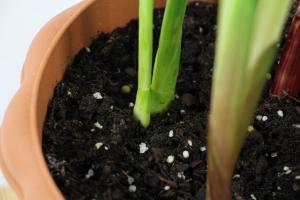When to Transplant Pot Plant
Transplanting pot plants is an important step in maintaining their health and ensuring they grow to their full potential. It involves moving a plant from one container to another, which allows it to receive the nutrients it needs to thrive. To ensure the success of the transplant, the most important thing is to choose the right time for the task. Here are some key points to help you determine when to transplant your pot plant.
The Right Time to Transplant Pot Plants
The right time to transplant a pot plant depends on a few factors, including the plant's size and growth rate, the type of container it's currently in, and its overall health. Generally speaking, plants should be transplanted when they outgrow their current container or if they are showing signs of poor growth, such as yellowing leaves or root circling.
In most cases, it's best to transplant during the plant's active growing season, which in most climates is between early spring and early fall. This ensures that the plant has the best chance of adjusting to its new container and developing a strong root system before it goes dormant for the winter.
Signs that Your Pot Plant Needs Transplanting
If you're not sure whether your pot plant needs transplanting, here are some signs to look out for:
The plant is visibly root-bound, with roots circling around in the pot.
The plant has stopped growing or its growth has slowed down significantly.
The leaves are yellowing or wilting, indicating that the plant is not getting enough nutrients.
The potting soil is dry and compacted, making it difficult for water to penetrate.
The plant is top-heavy and tipping over in its current container.
How to Transplant a Pot Plant
Transplanting a pot plant is fairly simple, but it's important to follow the proper steps to ensure the success of the process. Here's a brief overview of how to transplant your pot plant:
Choose a new container that is slightly larger than the current one and has sufficient drainage holes.
Prepare the new container by adding fresh, well-draining potting soil.
Gently remove the plant from its current container, being careful not to damage the roots.
Tilt the plant to the side and carefully loosen any tangled or circling roots with your fingers or a fork.
Place the plant in the new container and fill in any gaps with fresh potting soil.
Water the plant thoroughly, and place it in a spot with appropriate light and temperature conditions for its type.
Conclusion
Transplanting a pot plant may seem daunting, but with the right timing and techniques, it can be a simple and rewarding process. If you're not sure whether your plant needs transplanting, look for signs of poor growth or consult with a gardening expert. With a little care and attention, your pot plants will thrive and add beauty and vitality to your home or garden.

 how many times do yo...
how many times do yo... how many planted tre...
how many planted tre... how many pine trees ...
how many pine trees ... how many pecan trees...
how many pecan trees... how many plants comp...
how many plants comp... how many plants can ...
how many plants can ... how many plants and ...
how many plants and ... how many pepper plan...
how many pepper plan...
































